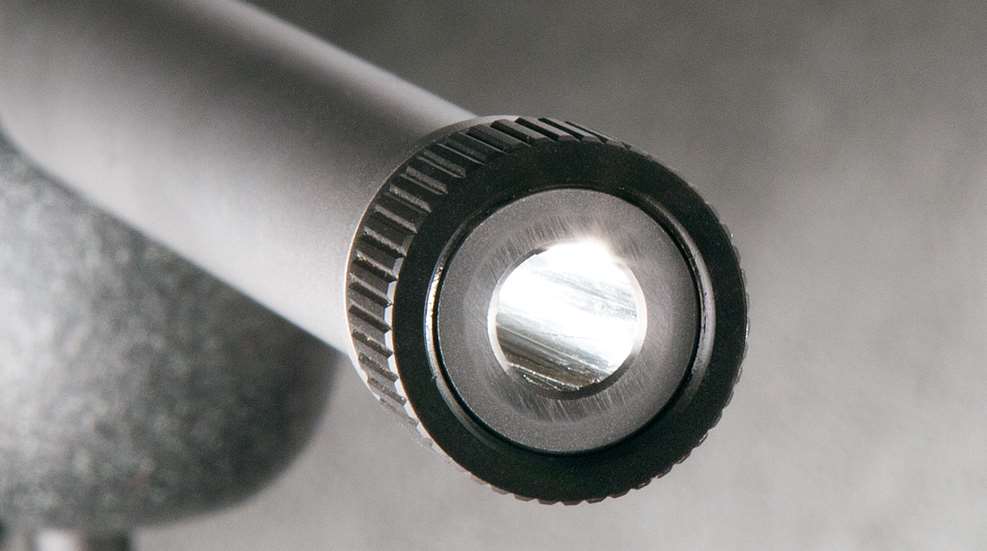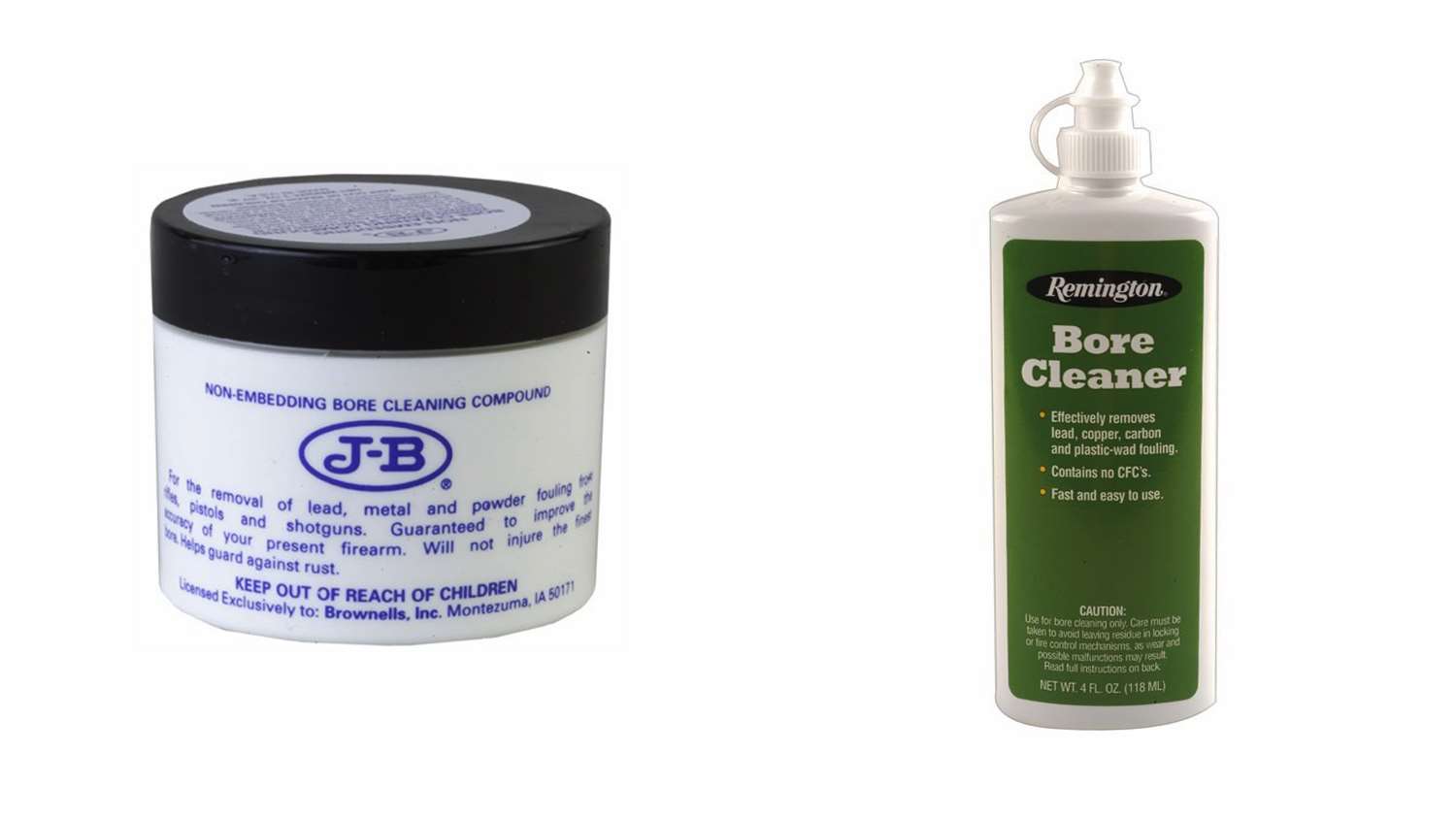
Mystery and misconception surrounds the barrel break-in process. Is it necessary? How long-winded should this process be? What are the benefits? All are viable questions.
Before we get into various break-in procedures, let’s look at how barrels are manufactured and what shooters face when approaching a virgin barrel. Barrels are manufactured using several different processes to put the rifling into the bore. The processes selected and the finishing or final-lapping technique used will determine interior barrel smoothness. Here, we’ll assume that all barrels in this discussion have the exact same interior dimensions. Always keep in mind the barrel production process might leave minuscule marks in the bore that are 90 degrees to bullet travel, which will affect the collection of fouling.
All barrels begin by having a long, deep-hole drill pushed down a round, steel bar that (hopefully) will seek perfect center. The sharpness of the drill, the lubrication process employed for chip removal and other considerations will determine the interior finish. Radial tool marks down the length of the barrel will always be present from this operation. The question is: To what degree and how are those radial tool marks addressed in the latter stages of production? After this step, many companies will hone the bore to a fine finish. But again, this process can still leave radial tool marks, just finer than after drilling.
At this point, the rifling process will begin. Some manufacturers will place a mandrel with a reverse rifling pattern down the bore and opposing hammers will forge or pound the material onto that mandrel under high pressures. This process elongates and flattens the steel grains, making the barrel far stronger than the raw material was. The mandrel is then withdrawn (rotated out), leaving the rifling in a near-finished state. For button-rifled barrels, a mandrel is drawn down the bore for each groove, that scrape the material aside to finish the lands and grooves of the rifling in a single pass. Cut-rifled barrel makers draw a single point cutting tool through the bore that scribes one groove of the rifling at times to about .0001-inch deep. The barrel is then indexed and the next groove is scribed. This process continues, with the cutter depth increasing in approximate 0001-inch increments until the proper groove depth is reached.
After the rifling the bore, the final lapping process begins. Some button-rifled barrels are finish lapped, while some are not. Those that are will sometimes be lapped like the cut-rifled barrels. Cut-rifled barrel are generally hand-lapped in the direction of bullet travel using a lead slug that is cast in the individual bore. A non-embedding lapping compound is placed on the slug and the slug is rotated back and forth down the bore, until the desired finish is achieved. Most high-production, hammer-forged barrels will see very little lapping, if any, once the rifling is complete. They tend to collect fouling faster than barrels rifled by the other methods.
Barrels with a very smooth interior tend to foul less than those with a rough interior. The goal for shooters here, is to create a bore condition that will produce less fouling. Accomplish this by micro-burnishing any radial tooling marks left in the barrel in the direction of bullet travel. This is where the “fire, clean, fire, clean” method (for many shots) helps make the barrel smoother.
Another consideration is the leade or throat condition, once the barrel is chambered. The chambering reamer can leave radial tool marks in the fine-tapered throat―a source of bad fouling if done poorly. A peek with a bore scope can root out this type of condition in a hurry.
Now that you have a feel for the manufacturing considerations in a barrel/chamber, the question is: How do I properly break in my new barrel? Well, it’s not any easy question to answer, and it depends on the mission of the barrel. Opinions vary and you will get 100 different answers if you post that question on any forum online. I’ll offer mine and you can add it to that list.

For a factory hunting rifle with a hammer-forged barrel (Remington, Winchester, Browning, etc), I prefer to clean out the bore with solvent as it comes from the factory, then patch it dry. I simply start shooting it because it will never see the mileage or abuse that a premium match barrel ever will. See how the barrel reacts to the fouling. If it fouls out quickly, clean the bore using a chemical means and once clean, use a patch wrapped on an undersized cleaning brush with a liberal application of diatomaceous earth to lap the bore/grooves full length, perhaps 25 strokes. Be sure to use a cleaning rod with good bearings so that brush/patch combination tracks smoothly down the rifling. This compound (JB Bore Compound or Remington Bore Cleaner) will break down in particle size as you use it and should burnish off any rough areas. Don’t get carried away using these abrasives. Sometimes, a highly-polished bore can make things worse. Go slow and see what results 25 strokes gives you.
For all other types of barrels (including a pile of premium ones), I like to clean out the bore with solvent, patch it dry, shoot five shots and clean it to bare metal, followed by another five shots. The barrel is then clean and it’s never touched again until accuracy drops off. I will note the round count once I begin to see unexplained fliers, and I will clean it at 75-80 percent of that number thereafter. Generally, I will let the barrel tell me when it needs service and it really isn’t very often. Timing it so that it doesn’t happen in the middle of a big match is the real goal.
Yes, I have broken in several barrels using the long-winded methods recommended by some top barrel manufacturers. I saw no great return on my time investment by following that method, and one of my very best shooting barrels had no break-in whatsoever. So, take this all in with a grain of salt and let your own judgement determine your course of action when faced with a virgin barrel.
We would love to read your thoughts on this. Share your own tips in the comment section below, or by emailing us at [email protected]

































